Latest Posts by ritasakano - Page 6
Eventos para Março!!
What’s Up for March 2017?
What’s Up for March? The moon hides red star Aldebaran and crescents dazzle after dusk.

On March 4 the first quarter moon passes between Earth and the star Aldebaran, temporarily blocking our view of the star. This is called an occultation.

The occultation begins and concludes at different times, depending on where you are when you view it.

The event should be easy to see from most of the U.S., Mexico, most of Central America, the Western Caribbean and Bermuda.

Observers along a narrow path from Vancouver, British Columbia, to Hartford, Connecticut, will see the moon “graze” the star. The star will disappear and reappear repeatedly as hills and valleys on the moon alternately obscure and reveal it.

As seen from Earth, both Mercury and Venus have phases like our moon. That’s because they circle the sun inside Earth’s orbit.

Planets that orbit between Earth and the sun are known as inner or inferior planets.

Inferior planets can never be at “opposition,” which is when the planet and the sun are on opposite sides of Earth.

But inferior planets can be at “conjunction,” which is when a planet, the sun and Earth are all in a straight line.

Conjunction can happen once when the planet is on the opposite side of the sun from Earth and again when it’s on the same side of the sun as Earth.

When a planet is on the opposite side of the sun from Earth, we say it is at “superior conjunction.” As the planet moves out from behind the sun and gets closer to Earth, we see less and less of the lit side. We see phases, similar to our moon’s phases.

Mercury is at superior conjunction on March 6.

A few weeks later, the planet emerges from behind the sun and we can once again observe it. By the end of March we’ll see a last-quarter Mercury.

On April 20 Mercury reaches “inferior conjunction.”

Brilliant Venus is also racing toward its own inferior conjunction on March 25. Watch its crescent get thinner and thinner as the planet’s size appears larger and larger, because it is getting closer to Earth.

Finally, look for Jupiter to rise in the East. It will be visible all month long from late evening until dawn.

You can catch up on solar system missions and all of our missions at www.nasa.gov
Watch the full “What’s Up for March 2017″ video here:
Make sure to follow us on Tumblr for your regular dose of space: http://nasa.tumblr.com
O que poderemos ver com o James Webb?





Jupiter’s Galilean Moons
Io - Jupiter’s volcanic moon
Europa - Jupiter’s icy moon
Ganymede - Jupiter’s (and the solar system’s) largest moon
Callisto - Jupiter’s heavily cratered moon
Made using: Celestia, Screen2Gif & GIMP Based on: @spaceplasma‘s solar system gifs Profile sources: http://solarsystem.nasa.gov/planets, http://nssdc.gsfc.nasa.gov/planetary/factsheet/joviansatfact.html
As imagens de Júpiter deixa-nos atordoado.

The cloudscape of Jupiter, observed by NASA’s Voyager 1 probe on February 3, 1979.
(Planetary Society)
![Cassini: Photos Of Saturn’s Ocean Moon Enceladus, November 26th 2017: [1] [2] [3] [4] [5] [6] [7] [8]](https://64.media.tumblr.com/d9028e2e0d6a044bf7f46486fdbc2594/tumblr_ohedi4ED2U1r4o9aco1_500.jpg)
![Cassini: Photos Of Saturn’s Ocean Moon Enceladus, November 26th 2017: [1] [2] [3] [4] [5] [6] [7] [8]](https://64.media.tumblr.com/efc6e64bcc45405d8a78249cfbf2fbc6/tumblr_ohedi4ED2U1r4o9aco2_500.jpg)
![Cassini: Photos Of Saturn’s Ocean Moon Enceladus, November 26th 2017: [1] [2] [3] [4] [5] [6] [7] [8]](https://64.media.tumblr.com/c1d38d55509e4e92f02a0ce301fec091/tumblr_ohedi4ED2U1r4o9aco3_500.jpg)
![Cassini: Photos Of Saturn’s Ocean Moon Enceladus, November 26th 2017: [1] [2] [3] [4] [5] [6] [7] [8]](https://64.media.tumblr.com/d6bb6e2182bdcba5970b3495999bbe22/tumblr_ohedi4ED2U1r4o9aco4_500.jpg)
![Cassini: Photos Of Saturn’s Ocean Moon Enceladus, November 26th 2017: [1] [2] [3] [4] [5] [6] [7] [8]](https://64.media.tumblr.com/1cd24c66229f48f88a0c733c040a5039/tumblr_ohedi4ED2U1r4o9aco5_500.jpg)
![Cassini: Photos Of Saturn’s Ocean Moon Enceladus, November 26th 2017: [1] [2] [3] [4] [5] [6] [7] [8]](https://64.media.tumblr.com/118dfe8fb64f25a325170b6c9827ebad/tumblr_ohedi4ED2U1r4o9aco6_500.jpg)
![Cassini: Photos Of Saturn’s Ocean Moon Enceladus, November 26th 2017: [1] [2] [3] [4] [5] [6] [7] [8]](https://64.media.tumblr.com/e03ced7a9d7d631f52e7eb0666afa985/tumblr_ohedi4ED2U1r4o9aco7_500.jpg)
![Cassini: Photos Of Saturn’s Ocean Moon Enceladus, November 26th 2017: [1] [2] [3] [4] [5] [6] [7] [8]](https://64.media.tumblr.com/fb8ce11c6553c95ee42c031a63fa8644/tumblr_ohedi4ED2U1r4o9aco8_500.jpg)
Cassini: Photos of Saturn’s ocean moon Enceladus, November 26th 2017: [1] [2] [3] [4] [5] [6] [7] [8] Image Credit: NASA/JPL-Caltech/Space Science Institute
Linda imagem.

A stereo image of Jupiter’s atmosphere, derived from data collected by the Juno spacecraft during perijove 3. These images, taken at different point in the orbit, can be combined to reveal the 3D structure and relief of clouds in the southern atmosphere. To see the image in 3D, relax the eyes until the white circles overlap, then look at the image. Alternatively the image can be viewed with Google Cardboard or another VR device.
Image source: NASA
Processing: James Tyrwhitt-Drake











SpaceTime 20170201 Series 20 Episode 09 is now out
SpaceTime covers the latest news in astronomy & space sciences.
The show is available as a free twice weekly podcast through itunes, Stitcher, Pocketcasts, SoundCloud, Bitez.com, YouTube, Audio Boom, and from www.spacetimewithstuartgary.com
SpaceTime is also broadcast coast to coast across the United States on Science360 Radio by the National Science Foundation in Washington D.C.
SpaceTime daily news blog: http://spacetimewithstuartgary.tumblr.com/ SpaceTime facebook: www.facebook.com/spacetimewithstuartgary SpaceTime twitter feed @stuartgary
Today’s stories…
The universe being blown apart by dark energy The universe’s rate of expansion is continuing to accelerate at an ever increasing rate according to new measurements. The findings have important consequences for the ultimate fate of the universe and how soon that end arrives.
The secret of the super volcano A new study has conclu8ded that the largest volcanic eruption in human history – the Toba super-volcano in Indonesia – was triggered by vast quantities of water laden rock coming into contact with the volcano’s massive magma reservoir. The Toba volcano eruption 73 thousand years ago pushed humanity close to extinction slashing the human population down to as little as a thousand breeding pairs..
February Skywatch As well as a close encounter with a comet, the February skies are providing both an annular solar eclipse and a penumbral lunar eclipse.

Ao olhar Tudo parece simples Pontos Linhas Fios Juntos São a obra A criação A arte Simples tudo parece.
Perspective


酉だるま2017 By Rita Sakano



Crane Trisoctahedron designed by Fumiaki Shingu
Instructions

A sutileza dos detalhes.










Utagawa Kuniyoshi. The Sixty-nine Post Stations of Kisokaidô Road. 1852.
Universo Infinito Meu Universo Finito


yuri mizutani Original_2015










kazuaki horitomo’s tattooed cats.
![Antares M4 & Mars [1435x2156] : Vinoba || Ourspaceisbeautiful.tumblr.com](https://64.media.tumblr.com/99ce62481c6d76aa7aa8209255c83be0/tumblr_oi07tmanga1vuwfuqo1_540.jpg)
Antares M4 & Mars [1435x2156] : vinoba || ourspaceisbeautiful.tumblr.com
Eight Small Satellites Will Give Us a New Look Inside Hurricanes

The same GPS technology that helps people get where they’re going in a car will soon be used in space in an effort to improve hurricane forecasting. The technology is a key capability in a NASA mission called the Cyclone Global Navigation Satellite System (CYGNSS).

The CYGNSS mission, led by the University of Michigan, will use eight micro-satellite observatories to measure wind speeds over Earth’s oceans, increasing the ability of scientists to understand and predict hurricanes. Each microsatellite observatory will make observations based on the signals from four GPS satellites.

The CYGNSS microsatellite observatories will only receive signals broadcast directly to them from GPS satellites already orbiting the Earth and the reflection of the same satellite’s signal reflected from the Earth’s surface. The CYGNSS satellites themselves will not broadcast.

The use of eight microsatellite observatories will decrease the revisit time as compared with current individual weather satellites. The spacecraft will be deployed separately around the planet, with successive satellites passing over the same region every 12 minutes.
This will be the first time that satellites can peer through heavy tropical rainfall into the middle of hurricanes and predict how intense they are before and during landfall.

As the CYGNSS and GPS constellations orbit around the Earth, the interaction of the two systems will result in a new image of wind speed over the entire tropics every few hours, compared to every few days for a single satellite.

Another advantage of CYGNSS is that its orbit is designed to measure only in the tropics…where hurricanes develop and are most often located. The focus on tropical activity means that the instruments will be able to gather much more useful data on weather systems exclusively found in the tropics. This data will ultimately be used to help forecasters and emergency managers make lifesaving decisions.
Watch Launch!

Launch of CYGNSS is scheduled for 8:24 a.m. EST on Monday, Dec. 12 from our Kennedy Space Center in Florida. CYGNSS will launch aboard an Orbital ATK Pegasus XL rocket, which will be deployed from Orbital’s “Stargazer” L-1011 carrier aircraft.
Pegasus is a winged, three-stage solid propellant rocket that can launch a satellite into low Earth orbit. How does it work? Great question!

After takeoff, the aircraft (which looks like a commercial airplane..but with some special quirks) flies to about 39,000 feet over the ocean and releases the rocket.

After a five-second free fall in a horizontal position, the Pegasus first stage ignites. The aerodynamic lift, generated by the rocket’s triangle-shaped wing, delivers the payload into orbit in about 10 minutes.
Pegasus is used to deploy small satellites weighing up to 1,000 pounds into low Earth orbit.
Watch live coverage HERE.
Make sure to follow us on Tumblr for your regular dose of space: http://nasa.tumblr.com
👏


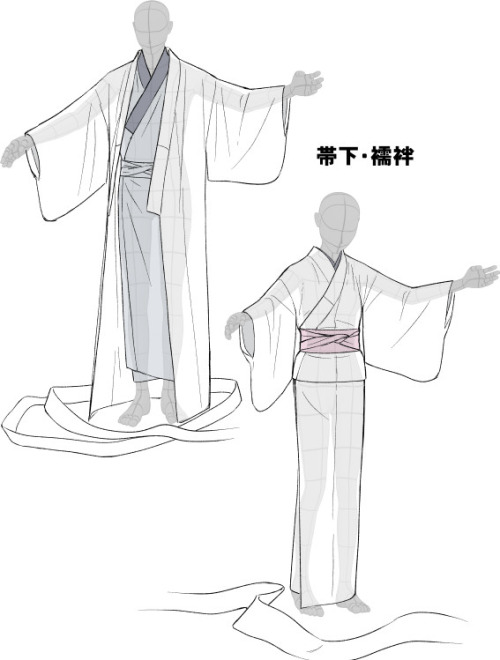
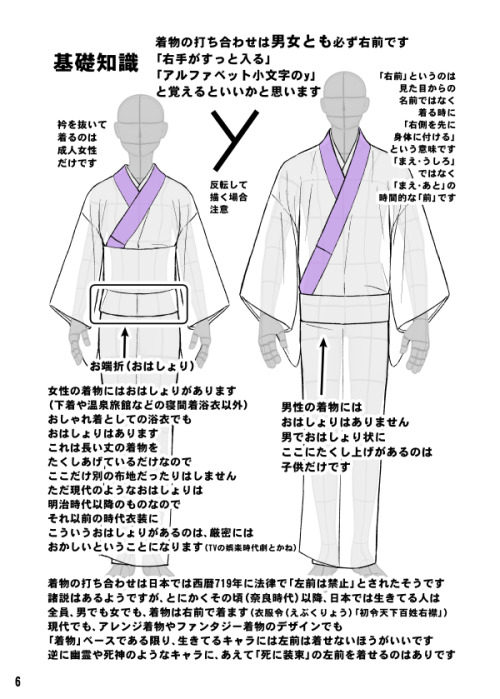

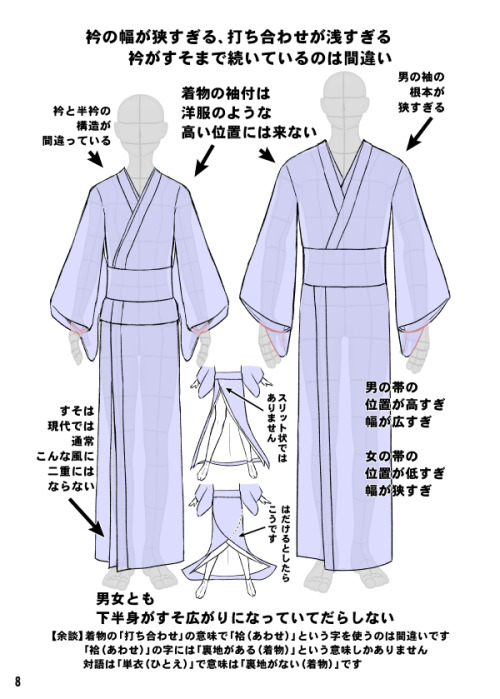
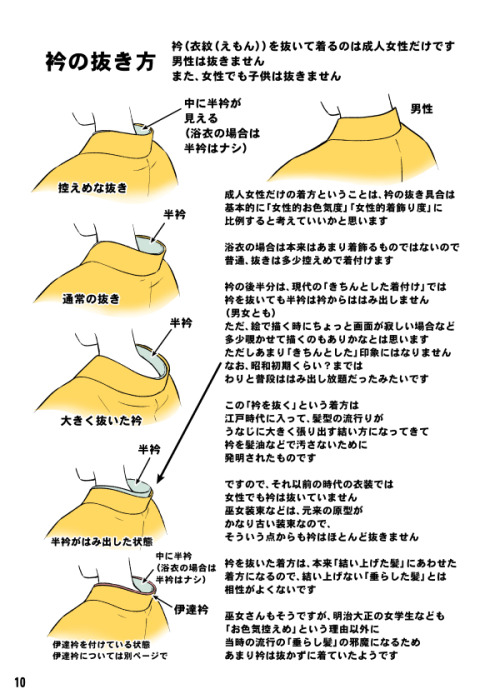

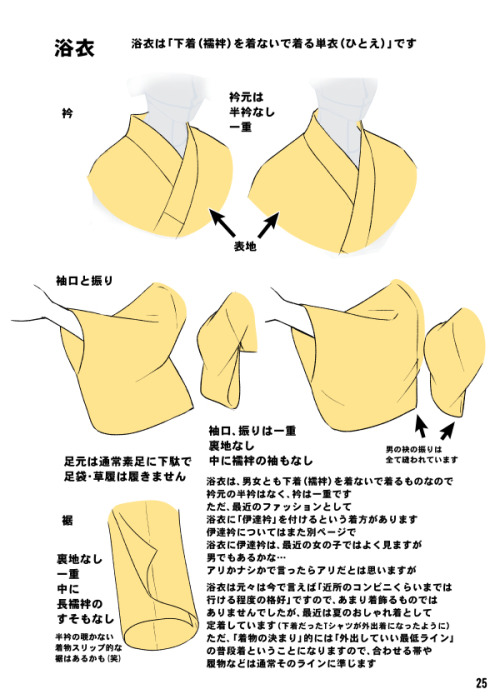
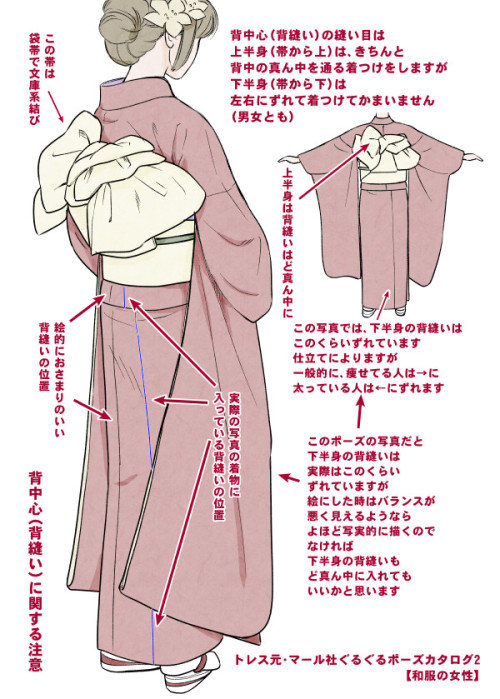
Kimono drawing guide ½, by Kaoruko Maya (tumblr, pixiv, site). Booklet is available in pdf for ¥ 900 here.
Here you can see:
female kimono and yukata (note how the juban underwear peeks when in kimono + how belts differ)
male yukata and kimono (note how the juban underwear peeks when in kimono)
dressing up: male (kimono is not closed yet) and female (kimono closed with datejime belt and ready to put on obi)
differences between female and male kimono once dressed (note how the collars and belts set)
common drawing mistakes (compare with previous picture: shoulders lines are too defined, there is a double hem, collars are narrow, belt is not at the right place etc)
women back collar (the lower the sexier) and men back collar (close to the nape)
back and sleeves differences between men and women
collars and sleeves and view of how kimono drapes around body
Furisode back (long sleeves kimono) and formal furisode obi knot example

Ernst Haeckel’s “Paleontological Tree of Vertebrates” (c. 1879).
Japanese


This image was taken by the NASA/ESA Hubble Space Telescope’s Advanced Camera for Surveys (ACS) and shows a starburst galaxy named MCG+07-33-027. This galaxy lies some 300 million light-years away from us, and is currently experiencing an extraordinarily high rate of star formation — a starburst.
Normal galaxies produce only a couple of new stars per year, but starburst galaxies can produce a hundred times more than that. As MCG+07-33-027 is seen face-on, the galaxy’s spiral arms and the bright star-forming regions within them are clearly visible and easy for astronomers to study.
In order to form newborn stars, the parent galaxy has to hold a large reservoir of gas, which is slowly depleted to spawn stars over time. For galaxies in a state of starburst, this intense period of star formation has to be triggered somehow — often this happens due to a collision with another galaxy. MCG+07-33-027, however, is special; while many galaxies are located within a large cluster of galaxies, MCG+07-33-027 is a field galaxy, which means it is rather isolated. Thus, the triggering of the starburst was most likely not due to a collision with a neighboring or passing galaxy and astronomers are still speculating about the cause. The bright object to the right of the galaxy is a foreground star in our own galaxy.
Object Names: MCG+07-33-027
Image credit: ESA/Hubble & NASA and N. Grogin (STScI)
Text credit: European Space Agency
Time And Space
Earth from Space - LIVE video of Earth From The International Space Station
Thanks, amazing-space-fan!
Solar System: Things to Know This Week
Learn the latest on Cassini’s Grand Finale, Pluto, Hubble Space Telescope and the Red Planet.
1. Cassini’s Grand Finale

After more than 12 years at Saturn, our Cassini mission has entered the final year of its epic voyage to the giant planet and its family of moons. But the journey isn’t over. The upcoming months will be like a whole new mission, with lots of new science and a truly thrilling ride in the unexplored space near the rings. Later this year, the spacecraft will fly repeatedly just outside the rings, capturing the closest views ever. Then, it will actually orbit inside the gap between the rings and the planet’s cloud tops.
Get details on Cassini’s final mission
The von Kármán Lecture Series: 2016
2. Chandra X-Rays Pluto

As the New Horizon’s mission headed to Pluto, our Chandra X-Ray Observatory made the first detection of the planet in X-rays. Chandra’s observations offer new insight into the space environment surrounding the largest and best-known object in the solar system’s outermost regions.
See Pluto’s X-Ray
3. … And Then Pluto Painted the Town Red

When the cameras on our approaching New Horizons spacecraft first spotted the large reddish polar region on Pluto’s largest moon, Charon, mission scientists knew two things: they’d never seen anything like it before, and they couldn’t wait to get the story behind it. After analyzing the images and other data that New Horizons has sent back from its July 2015 flight through the Pluto system, scientists think they’ve solved the mystery. Charon’s polar coloring comes from Pluto itself—as methane gas that escapes from Pluto’s atmosphere and becomes trapped by the moon’s gravity and freezes to the cold, icy surface at Charon’s pole.
Get the details
4. Pretty as a Postcard

The famed red-rock deserts of the American Southwest and recent images of Mars bear a striking similarity. New color images returned by our Curiosity Mars rover reveal the layered geologic past of the Red Planet in stunning detail.
More images
5. Things Fall Apart

Our Hubble Space Telescope recently observed a comet breaking apart. In a series of images taken over a three-day span in January 2016, Hubble captured images of 25 building-size blocks made of a mixture of ice and dust drifting away from the comet. The resulting debris is now scattered along a 3,000-mile-long trail, larger than the width of the continental U.S.
Learn more
Discover the full list of 10 things to know about our solar system this week HERE.
Make sure to follow us on Tumblr for your regular dose of space: http://nasa.tumblr.com
Fantástico!!

What’s that green streak in front of the Andromeda galaxy? A meteor. While photographing the Andromeda galaxy last Friday, near the peak of the Perseid Meteor Shower, a sand-sized rock from deep space crossed right in front of our Milky Way Galaxy’s far-distant companion. The small meteor took only a fraction of a second to pass through this 10-degree field. The meteor flared several times while braking violently upon entering Earth’s atmosphere. The green color was created, at least in part, by the meteor’s gas glowing as it vaporized. Although the exposure was timed to catch a Perseids meteor, the orientation of the imaged streak seems a better match to a meteor from the Southern Delta Aquariids, a meteor shower that peaked a few weeks earlier
Object Names: Andromeda Galaxy
Image Type: Astronomical
Credit: Fritz Helmut Hemmerich
Time And Space

Árvore Pirâmide em feltro bordada. By Rita Sakano
